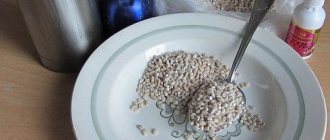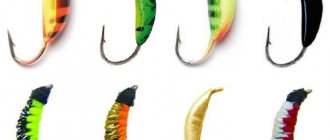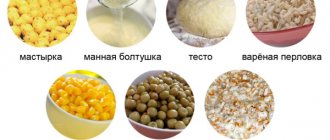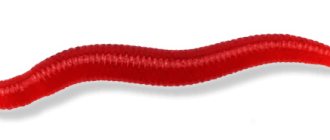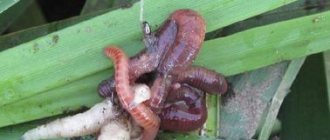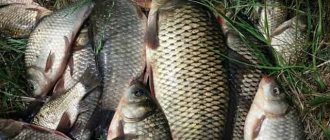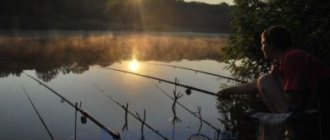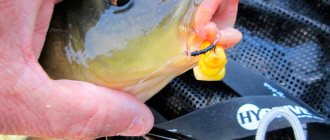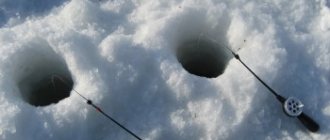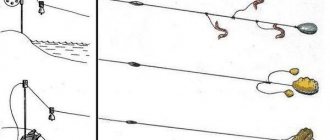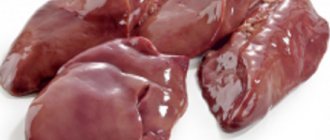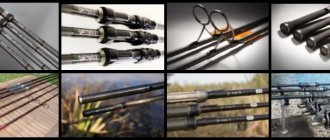It's no secret that fish, like any other living organism, loves variety in food. Depending on the time of year, water temperature and habitat, plant bait may be preferable to maggots, worms, and larvae of various insects. Just as people want something on a hot day, fish scour in search of some goodies, fishermen noticed this a long time ago and began to use a wide variety of plant products for bait:
- Wheat
- Barley
- Peas
- Corn
- Beans
- Potato
- Carrot
Boiled wheat
A good summer and autumn bait, reminiscent of small water snails, is especially effective for catching small and medium-sized crucian carp. After first filling the wheat with water for 8-10 hours, cook it for 2-3 hours over low heat until the grains swell and crack lengthwise. Then let the mass cool in the broth, which we sweeten a little. On the smallest crystal hooks No. 7-14, place from one to three grains, depending on the size of the hook.
All grain baits must be boiled in a mixture with cake, preferably hemp. The cake can be replaced with sunflower, flax and hemp seeds, first pound them in a mortar or pass them through a meat grinder twice. It is better to prepare any dough for the nozzle not with water, but with milk or berry juice. Boiled cereals are one of the most reliable baits for catching crucian carp. Roaches and all cyprinids also take them well.
For attachment, select whole grains with unbroken skins. The hook is passed under the skin, and the sting is brought out slightly. Wheat is placed on a dark hook No. 2.5-4 with a short shank; more than three grains are not hooked. Complementary feeding is necessary according to the principle: less, but more often. Roach is caught especially well; ide, silver bream, bream, podust and dace are also taken. Small grains are put on the hook in several pieces, piercing them in the middle.
You can also use oat and wheat grains taken from the ear and reaching milk maturity. In camping conditions, a thermos is suitable for steaming cereals and legumes. The required amount of grains is poured into it, but not more than a third of the volume, poured with boiling water and steamed until soft. Having filled the thermos in the morning, you get a ready-made nozzle for lunch or for the evening, and if in the evening - by the morning.
How to prepare peas for bait?
Peas are one of the best baits for bream, crucian carp and crucian carp. We have already published several articles devoted to its preparation:
How to cook peas for fishing?
How to cook peas for fishing
Here we describe the simplest cooking recipe :
- For the attachment we buy large, unshelled peas. Chickpeas are most often sold on the market - so it is better to use them.
- Fill the peas with water up to 2-3 cm above their surface, and let it brew for 2-8 hours (the more we insist, the less we will cook).
- After this, cook the peas. You can do this in a regular saucepan, making sure that the peas do not burn. In this case, when boiling, it is necessary to remove the foam several times. To avoid burning, you can cook in gauze or in a water bath.
- Cook for from 20 minutes to 2 hours - depending on the freshness of the peas themselves and the time of their preliminary infusion. Cook until the peas become soft and easy (with some effort) to crush with your fingers. The most important thing is that the skin on the peas remains intact.
- When the peas are ready, to stop the cooking process, cool them with cold water.
- If necessary, these peas can be stored in the refrigerator for several days.
Pearl barley
In addition to crucian carp, carp, roach, ide, chub, rudd bite well on pearl barley, and worse - silver bream and bream. For a one-time fishing trip, 1 glass of this cereal is enough as bait. Large grains are used for baiting. They are pierced crosswise with a hook. Large fish are baited with 3 pieces, of which only one has the point of a round crystal hook with a short shank No. 4-7 inserted into it. Place 1-2 grains on small fish. In order to preserve boiled pearl barley longer, you need to add a pinch of salicylic acid to it.
Rye, wheat, oats, millet
Cereal grains and millet are excellent baits for fishing ide, carp, crucian carp, and silver bream. They have high nutritional value. The grains are suitable for fishing on the current. They do not fly off the hook and remain attractive to fish throughout the entire fishing trip.
For example, wheat is more effective in some reservoirs than pearl barley. It is steamed and boiled, pre-soaking for 10 hours. Wheat is mixed with honey, flour, and breadcrumbs. Peas, wheat, and pearl barley are placed on the hook. Wheat wrapped in semolina gives a good effect. The result is such a voluminous and fragrant nozzle.
Steamed rye and oats look organic at the bottom of a reservoir. Often trophy ides are tempted by grains and willingly peck in a secluded place.
Large millet grains are an excellent bait. In order for the grains to sit well on the hook, they are not boiled in milk until fully cooked, so that the balls turn out whole and hard enough. Bream, crucian carp, roach and silver bream bite well on millet.
All cereals are good because they can be used as bait and bait. They fit perfectly into the “what you feed with is what you catch” rule.
Peas
It is better to take wrinkled peas rather than smooth ones. It is steamed like this. Pour into a vessel with water and keep for 8 to 24 hours, depending on the hardness. Cook the peas over low heat to prevent them from hardening. If necessary, add only boiled water. After an hour, the water is salted. Do not stir the mixture during cooking - it will turn out to be porridge.
Then the soaked peas along with water are poured into a pan, at the bottom of which a metal mesh or plywood circle with holes is placed. A net or board is also placed on top of the peas and lightly pressed down with some kind of weight. The peas placed on the fire are boiled for 40-50 minutes. Steamed peas should have a solid shell, be soft inside and not fall apart when lightly squeezed with your fingers. After cooking, the peas are separated from the water and dried, scattered on clean wrapping paper or a rag. This prevents the peas from spoiling quickly. The cooled peas are stored in a cool place in a vessel with water.
Boiled peas are an excellent addition. The crucian carp must get used to peas, so the fish must be introduced and fed. In calm waters, it is necessary to scatter the bait in two to four places the day before fishing. Immediately before fishing, only a few peas are thrown into the water. During the fishing process, from time to time several peas are dropped into the pond where the float is located. Raw and half-cooked peas are not suitable for bait and bait. Peas can be used most successfully in spring and autumn. With it you can fish both with a floating bait and with a bait on the bottom.
Place one pea on a dark hook No. 4-5 with a short shank so that it hides the sting, prying up part of the hook. The hook is inserted not between the halves, but across, the sting is slightly brought out. The most suitable hooks for this purpose are “crystal” hooks No. 2-1/0. Young peas, canned peas, waxy corn kernels from the cob can be immediately placed on the hook. Steamed corn and beans are planted in the same way. They are caught with bait, vertically and (less often) from the bottom. The hook must follow immediately.
Sterilized (pasteurized) and frozen peas are widely used. Sterilized (pasteurized) peas are simply drained, and frozen peas are only lightly boiled; fresh - should still be soft. It must be inserted in such a way that the tip of the hook, which is inserted perpendicular to the seed groove, peeks out slightly. Catching crucian carp with peas is a very attractive method and can bring a lot of fun. Tackle used: light rod up to 3 m long, fishing line with a diameter of 0.25 mm, a small unpainted oblong float made of cork, a “crystal” hook with a round shackle No. 1. After the float is installed and the nozzle touches the bottom, you need to wait a few minutes. If there is no bite, the cast is repeated. When the crucian carp does not take the bait after several dozen casts, they move to a new place. They fish with one rod, constantly holding it in their hand. At certain intervals, several peas are thrown into the water. When fishing in a quiet pond, you can use a light sliding sinker with a stop set 60-80 cm from the hook.
Plant attachments
- VK
Vegetable baits are successfully used by anglers when fishing for a variety of white fish. Properly prepared vegetable bait can compete with any bait of animal origin. There are a very large number of attachments of plant origin. Almost every fisherman can list at least ten ways to prepare porridge and dough. Content:
- Peas
- Corn
- Corn porridge
- Potato
- Dough
- Bread crumb
- Bread crust
- Cake
- Mastyrka
- Seaweed
- Berries
- Carrot
- Mixed nozzles
Peas
They are caught without processing them, taking them out of the pod. Old peas, but of the latest harvest and better wrinkled, are first filled with water at room temperature until softened. This requires from 12 hours to three days, depending on the moisture content of the grains. It is better to cook peas in the same water, adding two glasses of milk and half a teaspoon of baking soda per liter. The softened peas are placed in a gauze bag, suspended in a saucepan and cooked for 1.5-2 hours over low heat. You can steam peas in milk, but with the addition of 0.5 liters of water.
The peas must be chosen whole, with the skin intact, drained in a colander, washed and dried on linen, scattered in a thin layer, and stored that way, wrapped in a clean canvas moistened with oil. If you plan to use peas quickly, you can store them in water.
Place one large or 2-3 medium peas on the hook, passing the sting between the lobes where the embryo is hidden. It is advisable to hide the tip of the sting. It is useful to squeeze the peas on the hook a little so that the pulp appears.
You can use canned peas. They catch ide, bream, carp, roach, and crucian carp with donks and float rods (from the bottom).
Corn
Corn is used as a bait, both raw, milky ripe, directly from the cob, and boiled, canned.
They catch it in late summer and autumn. Corn is a favorite delicacy of carp. Other carp fish are not averse to biting on it. It is baited with several grains on hooks No. 6-12.
Corn porridge
This porridge is prepared in one of the following ways. Corn flour is poured into boiling water, stirred and cooked until a viscous mass is obtained. Add sugar and cover well to keep it firm. After a few hours, the cooled porridge is mixed with the pulp of white bread in a ratio of 2:1 and kneaded well. This porridge is used when fishing in calm water.
Another way. Pour a glass of granulated sugar into two glasses of boiling water and gradually add (stirring) corn flour into the resulting syrup. The finished porridge is kneaded. It's good to add a little vanilla there.
And one more way. Pour a glass of corn flour and 4-5 tablespoons of sunflower cake flour into a saucepan with three glasses of rain or river water. When the porridge hardens, it is rolled out in a layer up to 10 mm, and then, sprinkled with wheat flour, it is placed under pressure. It is kept under it until completely cooled. Before fishing, the porridge is cut into pieces of the required size.
They catch ide, carp, carp, bream, crucian carp, roach, and rudd using corn porridge.
Potato
For bait, both old and young small potatoes, the size of a hazelnut, are used, which appear shortly after the tops bloom. The potatoes are boiled in lightly salted water, unpeeled, to the point where a fork can be easily inserted into them. Then it is cooled in air, and if there is no time, then in cold water. Some fishermen use half-cooked potatoes, but they have only one advantage - they stay dead on the hook. And it should be used only when the bait is often eaten by crayfish or small carp. Old potatoes are cut into cubes and balls, if possible leaving the peel in several places with the edges rolled up - this way the fish bite better.
When fishing, this bait is stored in a hard container so as not to be crushed. Hooks needed No. 6-12. It is better to pierce a piece of potato with a hook in two places. It is more advisable to remove the leash, pull it through the nozzle with a wire, tighten or deepen the hook completely into its mass and then fasten the leash to the fishing line.
Here's another way. A piece of potato is pierced closer to one edge and the hook is passed to the head, and then it is turned 180° and the tip with the hook is sunk into the mass, the nozzles.
Mashed potatoes are a good addition to many vegetable baits. In particular, it is used in a mixture with wholemeal rye flour and fresh bread (arnautka). Carp, carp, barbel, and less often roach are caught.
Potatoes are also used as bait and groundbait by kneading them with cakes, because when fishing with potatoes, bait is required.
Dough
The dough is kneaded from rye and wheat flour of simple grinding with water or milk. At the same time, it is good to add raw egg yolk and a little honey to it. The finished lump of dough is stored in a rag moistened with oil. If the dough balls are made in advance, they can be boiled with boiling water. They become stronger and more fragrant.
Before placing on the hook, uncooked dough is kneaded well with your hands. If desired, you can tint it yellow or red with food coloring. They use it to catch crucian carp, roach, carp and other fish.
Bread crumb
Bread is known as the oldest and most accessible fishing bait. White, gray, and well-baked rye bread are suitable for fishing.
Most of all, fish “like” fresh, tasty-smelling rye or gray bread. Sometimes bread is painted red by adding red lead, aniline, lipstick or carmine. This probably makes sense: in the summer, red bread balls are used to catch, as a rule, larger fish, which probably mistake them for caviar or berries.
The crumb of rye bread is flavored with milk, raw egg yolk, honey, and unrefined butter. The crumbs of white bread are flavored with honey, Provençal or anise oil. Dosage: per kilogram of crumb, one tablespoon of food grade or 4-5 drops of anise oil is enough.
The bread crumb does not need to be flavored with anything. They catch the same fish with it as with dough. Sometimes the crumb can be tinted with aniline, food coloring or lipstick. After this, balls are made from it. For greater strength, finely chopped cotton wool is rolled into them. If the balls are prepared in advance, then grease them with vegetable oil. The size of the balls for catching chub, carp and ide is the size of a hazelnut. They fish for crumbs using float rods and donks.
Often other plant and sometimes animal baits are mixed into the bread crumb. So, in winter, roaches bite better on bread mashed with bloodworms, and in summer, ide and carp bite better on bread mixed with May beetle larvae. In addition, you can add fresh cottage cheese, egg whites or yolks, boiled or crushed carrots, and potatoes to the bread. In a word, the classic bread bait has been modernized over the years and is gaining more and more popularity among experienced and novice fishermen.
Bread crust
They fish with the crust of rye bread, either by throwing it from the top under the bushes, where the fish “slurp”, or with donks from the bottom. They catch carp, carp, bream, ide, and chub.
Chub can be caught on the crust of a white bun, both on top and by rolling. But it’s better, of course, to take a bun that is sinking under its own weight and floating with the flow.
Cake
Cake is the most delicious bait for carp, carp, bream, ide and large roach. For fishing, sunflower, hemp, soybean, sesame, peanut and other cakes obtained from the processing of oilseeds are used.
Various types of them are used both for bait and as additives to other baits, baits and baits. For the nozzle, fresh hemp cake is often used, which is boiled over low heat with a small amount of flour and kneaded to a dough-like state, and then rolled into balls of different sizes, usually the size of a nut.
Of no small importance for successful fishing is the method of preparing cake on a press. Avid fishermen prepare it this way. After the crusher, the seeds are sifted on a special sieve, through the holes of which only the hulled grain should be sifted. Then it is ground on rollers and fried, adding a little water so that the mass does not burn. When it is well fried, it is poured into a press. The mugs are made up to one and a half centimeters thick; the oil is not completely squeezed out of them.
The finished circles are sawed with a hacksaw into cubes 0.5-1 centimeter in size. The cube is tied crosswise with white or black thread, under which a hook is threaded. Practice has shown that the largest fish are caught on the smallest piece of cake, mounted on a forged hook of number 4-5. The pulp slowly soaks in water.
Cake dough. To prepare it, the waste obtained from sawing round timber is sifted through a thick sieve. Add half a glass of white wheat flour to a glass of cake dust, mix thoroughly, add water and knead until a thick, viscous dough.
Balls the size of a pea or a nut are placed on the hook (depending on its size). In July, August and September, carp, crucian carp, carp, tench, bream, ide, large roach and rudd are caught with this bait using bottom and float rods. The bite will be more intense if you add 10-15 drops of valerian to the dough. And if you knead the cake dough on a chicken or duck egg, then, firstly, the viscosity of the dough will improve, and it will not sour so quickly in the water, and secondly, the dough will become yellow in color, and the fish will be more likely to find the bait, especially in deep water. and rainy day
Mastyrka
A glass of yellow split peas is soaked for 5-6 hours. Then it is boiled over low heat until it becomes a homogeneous paste, into which about half a glass of semolina is gradually poured, stirring well.
To make the peas boil faster, you can add half a teaspoon of baking soda or cook them for 20 minutes in a pressure cooker.
Additionally, the yolk of a chicken egg (you can use white), a few drops of sunflower oil and half a teaspoon of honey are added to the mastyrka. For carp, personally, a few drops of anise oil.
Then the hot mastyrka is wrapped in a clean rag and kneaded well with your hands.
The main requirement is that the bait must be as soft as possible and at the same time not be washed off the hook for 15-25 minutes (depending on the current).
All carp fish are caught using mastyrka. They can fish both with a donk and a float rod in any current. The ide prefers when the mastyrka is baited with pea-sized balls on the hook, the bream prefers when the hook is walled up in a pear-shaped lump.
Seaweed
Mulberries are filament plants that are bright green in color and look like strands of fine silk thread. Mulberry grows in water (with weak and moderate currents) on stones, snags, piles, sunken trees, on wooden ridges and on the underwater part of hydraulic structures.
Young, not very long threads are used for baiting. They are torn off and washed to remove mucus and silt, being careful not to remove living organisms that are attached to the threads. When fishing, they are stored in running water tied in small bundles.
A figure eight or loop is made from a twisted mulberry strand and placed on a hook No. 3-4, leaving the tip open. The end hanging from the hook should not be longer than 20 mm.
In those places where the mulberry tree cannot be reached, it is picked with a hook using a casting tackle, dragging it over the plants. The caught algae are straightened on the hook, and if they are short enough, then they are caught directly on them - always in the current and where the mulberry grows. Slowly floating greenery always attracts fish, and it greedily swallows it.
Before you start fishing with mulberry, you need to make sure that the fish are feeding on it. To do this, it is enough to squeeze the first caught fish a little, and if greenery appears from the anus, then it’s time to catch fish on this green grass with a float rod - floating and retrieving. Most often you come across roach.
Some fishermen collect mulberry and dry it. A dough is kneaded with its decoction, which, having acquired the smell of algae, attracts roaches and rudd both in summer and winter.
Berries
Cherries, sweet cherries, currants, mulberries, and some wild berries are used as bait. You can also plant steamed raisins.
The berries are used in areas where they grow in abundance, and always with attachment, since the fish must be accustomed to the berries. Chubs get used to them more readily than other fish, and carp are also suitable for raisins.
Carrot
The washed carrots are boiled in salted water until they are not fully cooked, but so that they soften and are able to stay on the hook. It is dried in air and stored in canvas bags or in a rag.
Place pieces on the hook in the same way as potatoes. With its help, non-predatory fish are caught using bottom gear.
Mixed nozzles
When there is no bite on natural baits, the fisherman begins to experiment in attempts to seduce the fish with some unusual food, including various combinations of natural baits. This often brings success.
As established by practice, mixed nozzles are divided into “sandwiches” and mechanical mixtures. “Sandwiches” is a bait consisting of two foods placed on one hook. Mechanical mixtures are those that consist of two or more types of food in different proportions, placed on the hook in one lump.
Bread-blood mixture The crumb of white bread is soaked in fresh animal blood. This is then mixed with clean soft bread or coarse wheat flour to give the desired viscosity. The crumb takes on a reddish color. The smell and color attract fish. You can catch all carp fish both in summer and winter.
Bread with honey Any fresh bread is suitable. Honey binds kneaded bread well, it becomes sweet and has a pleasant smell. Delicacy for fish.
Bread or dough with bloodworms In bread or dough, knead small bloodworms until smooth. A good broody for carp fish. Instead of bloodworms, you can use the larvae of other insects.
Porridge and dough with dill Fresh dill is chopped very finely, and dried dill is ground into powder. Dill is added to the dough or porridge during their preparation and everything is kneaded well until a homogeneous mass is formed. The nozzle acquires a greenish tint and a corresponding smell.
Shell meat with dough and porridge Finely chopped shell meat is rolled into dough or porridge. Carp, bream, crucian carp, tench and rudd are caught.
Bread crumb with cheese For 100 g of crumb take 7-8 g of homemade cheese. The cheese is finely ground and mixed well with the crumb. The proportion is specified depending on the plasticity of the crumb.
“Herkuses” flakes with dough Steamed “Herkules” flakes are moved on a hook so that their edges puff up to the sides. A piece of dough is placed on the sting. The bait is good for catching crucian carp.
Related articles:
Double silicone bait. Double Zulu-Rig
Chatterbox. Fishing with a chatterbox
Hemp seeds as a nozzle
Peas, pearl barley and other attachments
Corn
Ripe, firm corn should be cooked in the same way as peas. A fail-safe bait for crucian carp in early autumn is milky corn, the grains of which are simply husked from the cob and placed on a hook. At the stage of milky-waxy ripeness, the entire cob is lightly boiled (individual grains are husked only when planting). Supplies are made in this way: cooked grains are placed in glass canning jars and sterilized (pasteurized).
Only individual grains are planted, like peas. They are strung lengthwise on the hook so that the point of the hook pierces the skin and peeks out a little.
Potato
Potatoes are often used to attract crucian carp and crucian carp, and they are often caught using them. Take young, yellowish, slightly boiled potatoes and boil them with the skin on in salted water until almost done. Cool, place cubes of approximately 1×1 cm on the hook, and hide the hook in the nozzle. To prevent a piece of tuber from flying off the hook when casting, you need to know how to place the potato on the hook. Having cut the cube to the desired size, the hook is inserted into it. It is necessary that the hook is camouflaged; this is very important for success in catching such cautious fish as crucian carp. Some anglers make rounds instead of cubes, cutting them out of potatoes with a tube. When baiting potatoes, you can also use a needle with a torn eye. With its help, the leash is pulled through a piece of potato and the hook tip is hidden in the bait. By the way, the needle is useful when inserting other soft attachments, for example, dough. Having pulled the leash through the dough, a tiny crust of bread is hooked onto the hook and pressed against the bottom of the dough. This type of bait holds onto the hook more firmly. They are caught using potatoes mainly on the bottom, and in two ways. Large hooks are hidden completely in the potatoes, or small cubes are strung only on the tip of the hook. It is convenient to use a fishing needle. Potato bait - until the beginning of July - in the form of a prism (cube) about half the size of a thumb (so that a hook No. 1-2/0 with a short shank can be well hidden in it). By autumn it is necessary to reduce the bait according to hook No. 1-2. In hotter weather, when the carp takes the bait carefully, you need to make cubes with edges up to 8 mm, which are placed only on the tip of the hook, like peas. Bait is necessary when fishing.
How to prepare pearl barley for bait?
On our website we have already published a whole article about how to properly prepare pearl barley for fishing. There we examined in detail several recipes and the differences between boiled and steamed pearl barley. In this article we will present, in our opinion, the best option for preparing pearl barley.
- Take a thermos with a wide neck and fill it with pearl barley no more than a quarter of its volume (when the barley swells, the barley increases approximately 4 times). In other words, add pearl barley by eye to 4 times less than the required volume.
- Add 1-2 tablespoons of sugar to the barley (or at the end add honey to the ready-made barley).
- Fill the thermos with boiling water, making sure to leave some free space (about a fifth).
- Let the barley brew for 3 hours. This is the optimal time for the pearl barley to become soft enough and at the same time hold well on the hook. Let us remind you that it is better to pierce pearl barley with a hook in the middle with a black stripe.
- After the barley has steeped, drain the water and pour the barley onto newspaper to dry. After that, sprinkle it with dry bait or breadcrumbs.
- Freshly prepared pearl barley is best suited for fishing, but if necessary, you can store it in the refrigerator for 1-2 days.
Bread
Carp fish are caught well with all plant baits. Bread was no exception to this rule. There are many recipes for making baits.
Here are some of them:
- White or black crumb, preferably dried, is moistened, squeezed and kneaded until it becomes a dense elastic mass.
- The crumb of rye bread is mixed with boiled, salted and well mashed potatoes, pour in unrefined sunflower oil and knead until a homogeneous mass is obtained that does not stick to your hands.
- The bread crumb is combined with processed cheese and kneaded until a paste is soft, like putty.
- The crumb of fresh bread should be mashed with a raw egg and placed in boiling water until it turns yellow.
- Fresh bread crumb is crushed with unrefined sunflower oil and honey, rolled into balls and brewed in boiling water.
- A cube is cut out of a bread crust and placed on a hook.
- The bread crumb of wheat bread (preferably not stale) is kneaded with your fingers until a dense, elastic mass is obtained. Sometimes 2-3 drops of vegetable oil are added before this. You can mix bread with hot mashed potatoes in a 1:1 ratio, but it is better if there are fewer potatoes. The prepared crumb is stored in a damp, well-wrung out clean cloth. For the bait, separate a piece of the finished crumb less than the size of a pea and attach it to a white hook No. 3.5-5 with a short shank. The sting and prying are hidden in the nozzle. It is possible to attach larger pieces in the shape of a pear, in which the hook is completely hidden. They fish vertically and from the bottom. Complementary feeding from grain waste is required. The hooking should not be delayed.
- Four-day-old stale white bread (loaf) is cut into slices 2.5 cm thick, the crust is removed. Each piece is placed in water for 2-3 seconds. The bread moistened in this way is placed on the palm of the left hand and kneaded with the thumb of the right hand until a paste is formed; it should be white, soft, viscous and without lumps. This can be achieved by using only stale bread. When made fresh, the paste turns out lumpy and gray. Store it in plastic containers.
- From a loaf of white bread, cut off the top crusty layer about 5-7 mm thick. Cut it into pieces of the required size and pour into a small glass jar with a lid. Add a little vegetable oil with a drop of the selected flavoring. You can’t overdo it here: if there is an overdose of flavoring, the fish may not approach the bait at all. Shake the jar thoroughly, the pieces of peel absorb the oil. The bait is kept in it throughout the fishing trip.
The number of bites increases noticeably if you mix a certain amount of ground bloodworms, shichits, babka, bark beetles, snails and shells into baits made from dough, bread, or porridge.
Bread attachment
Bread is the most common vegetable bait for fishing, which is good for catching all white fish. Fishermen often use wheat bread for fishing, but in some cases bait made from rye or bran bread works better. Separately, it is worth noting bread with cumin, which has a pronounced spicy aroma, which is very popular with the following types of fish:
- crucian carp;
- bream;
- ide;
- silver bream
For fishing, bread crumbs, crushed to a thick dough, are often used. Such bait holds well on the hook and does not fly off even with sharp casts. To prepare such a bait, the fisherman will need:
- remove the soft core from the bread loaf;
- dip the crumb into water for a second;
- Mash the crumb thoroughly until a thick, homogeneous mass is obtained.
To make the bait more attractive, it should be flavored with a small amount of unrefined sunflower oil. You can also use ground cinnamon or coriander as flavorings. A small ball is formed from a piece of crumb and placed on a hook. In order for the nozzle to hold better, it should be slightly squeezed with your fingers.
When fishing with bread, hooks with a wire spiral should be used.
When fishing for crucian carp in spring, excellent results are shown by the bread crust, which has positive buoyancy and slowly sinks to the bottom under the weight of the hook. Spring crucian carp often feeds in the water column, and a slowly descending bait manages to attract its attention. You need to place a piece of crust with a diameter of 1–1.5 cm on the hook. Since the bread crust is quite hard, the tip of the hook must be brought out - this will facilitate better bites.
When fishing for large bream and tench in stagnant water, unmashed bread crumb, which is taken from fresh bread, works well. The peculiarity of this bait is that it is not baited, but stuck to the hook by pressing tightly between the thumb and forefinger. Once in the water, the crumb significantly increases in volume and arouses great interest among large fish. To prevent the delicate bait from flying off when casting, it is recommended to use hooks equipped with a wire spiral.
White dough
It’s not so difficult to knead the dough yourself, I think everyone has made pancakes or pancakes at home, you don’t need culinary education. In addition, the dough should be rolled with a small amount of cotton wool, which will help keep the ball on the hook. Chlorinated tap water used for mixing dough may leave you without a bite. It is better to prepare bait using the water of the reservoir where you fish. It is useful to add hemp, anise or camphor oil to the dough. Semolina dough is prepared from 2-3 tablespoons of semolina and double the amount of water. All this is cooked for 2-3 minutes after boiling. The cooked porridge is cooled to a state that allows you to pick it up. Then knead the porridge - first with a spoon with dry cereal, and then with your hands, like dough in flour, until a dense dough is formed that does not stick to your hands. It’s a good idea to add 2-3 drops of vegetable oil and the same amount of honey to the dough. Pieces ranging in size from a pea to a hazelnut are torn off from the dough and skewered, rolled onto a white hook No. 4-6 with a short shank. They try to hide the hook. The cutting must be timely. Feeding is necessary. Flour dough is prepared with vegetable oil, honey and egg (white), in other words, it is made rich. Apply in the same way as crumpled bread.
Butter dumplings
There are many recipes for making dumplings for fishing:
- Butter dumplings are made and boiled in sunflower oil until tender.
- Mix flour with raw egg white and add honey.
- Knead a stiff dough with fruit and berry juice, preferably strawberry, and roll it into balls together with cotton wool fibers.
- A spoonful of sugar and a pinch of vanillin are dissolved in a quarter cup of water, the wheat dough is kneaded and ground with unrefined sunflower oil until a homogeneous mass is obtained.
You need to store the pastry dough in a toothpaste tube. The wide end of the tube is opened, the inside is washed with potassium permanganate, and the tube is filled with dough.
Semolina porridge is a universal bait for fishing
There are three ways to prepare this cereal - steaming, boiling or making semolina mash directly while fishing. The choice depends on the fishing method and conditions. There are several recipes for preparing semolina bait for fishing. Let's look at the most effective ones.
Chatterbox
This bait is not intended for long-term storage. The method for preparing semolina is to stir the cereal with water in a bowl and add flavorings. It is advisable to use cold water to increase viscosity. Then the porridge should swell for 10-15 minutes. After this, it is mixed again, balls are formed for attaching to a hook or placing in a feeder.
Cooking tips:
- water must be added gradually, bringing the composition to the formation of a dough;
- after kneading, excess liquid must be drained;
- add spices - vanilla, oil, coriander.
It is recommended to add spices in separate portions. This will help determine the best composition for the intensity of the bite. The shelf life of semolina for crucian carp does not exceed 5-6 hours. After this, it can be used as a basis for preparing the next portion, but with the obligatory addition of semolina and flavorings.
Steaming
You can steam semolina only at home. You will need a saucepan and standard additives. It should be less dense than mash. Application – for placing in a feeder or bait.
Preparation procedure:
- pour water into a saucepan, put on fire and wait until it boils;
- the cereal is added in a small stream, it must be stirred constantly;
- After obtaining a homogeneous mass and soaking, remove the pan from the heat without ceasing to stir the contents;
- seal the container with a towel, allowing the porridge to brew;
- after 1.5-2 hours the contents are mixed.
To prevent the finished mixture from sticking to your hands, it is recommended to pre-lubricate them with sunflower oil. This will give the future bait an additional aroma.
Feeder rig for beginners - catching bream in fast currents
Cooking
The best cooking method is boiling the cereal. At first she insists. You need to pour the semolina into a pan and add water so that its level is 3-5 cm higher than the cereal. Then the mixture should sit for 8-12 hours. It is recommended to do this at night.
The composition is poured into the prepared canvas bag. The pan is filled with water and placed on fire. After the liquid boils, a bag of cereal is lowered into it. Cooking time – up to 20 minutes. The last stage is mixing.
Experienced fishermen prefer to fish with several types of bait. Therefore, it is recommended to prepare various porridges in order to determine the best option locally. The fish may be picky about what they eat and may not bite the standard bait.
Alexander
Hello, I'm Alexander, the mastermind behind the blog. In terms of career and free time, I connected my life with the forest. How could it be otherwise when you live in Karelia! In this blog, I am responsible for sections dedicated to hunting, hiking and equipment. Welcome to my world!
Milk porridge
Milk porridge is prepared from millet grains. Cooked with milk. When the grains begin to boil, remove the pan, drain the milk, and knead the cooked porridge until the mass becomes as hard and sticky as window putty. The porridge rolled into lumps holds on the hook very well. It is useful to add anise drops or hemp oil to the porridge. During preparation, it is very useful to add a little vanillin and sunflower oil to all porridges and doughs intended for complementary feeding.
Cereals
Oatmeal is another common vegetable topping that can be used in two forms. For bottom fishing for bream or crucian carp, oatmeal, mixed in the form of a dough, is used. To make oatmeal dough you will need:
- boil water and add finely ground flakes into it;
- cook oatmeal for 30 minutes;
- drain the water;
- cool and add a little flour for viscosity;
- knead the resulting mass in your hands;
- add natural sunflower oil.
A flavor such as cinnamon goes well with oatmeal dough. A dough ball with a diameter of 1–1.5 cm is placed on hook No. 8–6.
Whole oat flakes are used when fish feed in the water column and are considered the best fishing bait when fishing for roach in the warm season. The procedure for preparing this nozzle is as follows:
- coarse oat grains are sifted from small particles in a colander;
- large grains are placed in a sieve and scalded with boiling water;
- The scalded oatmeal is laid out on a clean cloth and cooled.
Scalded grains become wet on the outside but remain dry on the inside, allowing them to stick well to the hook while still being neutrally buoyant. This bait sinks very slowly and is excellent for fishing fish that feed in the water column.
To prepare oatmeal dough, rolled oats must be boiled well.
To make the oatmeal more attractive, you can treat it with sweet flavors. When fishing with this bait, small hooks made of thin wire are used, which do not interfere with the slow sinking of the bait.
Cake
Of the cakes, hemp is the best, but crucian carp takes both sunflower and flaxseed well. Fresh cake is cut into cubes with sides approximately 1×1 or 1×1.5 cm and tied crosswise with a not too bright thread. To prevent it from slipping, grooves are cut into the sides of the cube. The hook is inserted under the thread. The cake is often steamed and kneaded with the crumb of fresh rye bread in approximately a 2:1 ratio, adding well-crushed charcoal until a thick dough is obtained, the point of the hook is hidden in the nozzle.
Greenery
Greens (water silk) in mid-summer make a good bait for crucian carp and roach. Greenery is found on underwater rocks, bridge pilings and snags in the form of soft wavy threads. A strand of greenery is rinsed, folded into a loop and tightened onto the shank of the hook. Its length is usually 20 mm, width 2 mm. Hook no larger than No. 3 with a short shank. The greens are planted in different ways: they wind the threads around the hook, covering the forearm and the sting with them; make a figure eight out of several threads and, folding them in half, put them on a hook and tighten them. The ends are cut off. They catch you in the wire.
Berries
Among fruits and berries, cherries, cherries, plums, grapes, raspberries, blackberries, currants, gooseberries, and also raisins, which are pre-soaked, are usually used as bait. Large fruits are divided. The cherry is placed on a single hook so that it goes around the pit; the rest of the fruits are either caught by the pulp, like dough (for example, halves of plums), or placed on the point of a hook, like peas. Fruits and berries are very effective bait, but preliminary attachment is necessary. Forest berries are good for bait. Where they often fall into the water, they (when fishing with bottom gear) often catch not only crucian carp, but also all carp fish.
Mastyrka
A very appetizing bait that smells catchy is the pea mastyrka. It is suitable for fishing carp, ide, bream, crucian carp, silver bream, roach and other white fish. Mastyrka is made by mixing boiled peas with semolina. It acts as a connecting component. Thanks to it, the mastyrka stays well on the hook. A high-quality mastyrka stays on the hook for 10-15 minutes. If you get a mastyrka that doesn’t fly off for an hour, then it’s completely unsuitable for catching large fish. Real mastyrka should be as soft as dough and smell only like peas. Flavored and modified variations are offshoots, and not always successful, of this bait.
Mastyrka is suitable for fishing with all peaceful gear. To get a more viscous bait that would not fall off during long casts, cotton wool is added to it, as is the case with dough or bread.
